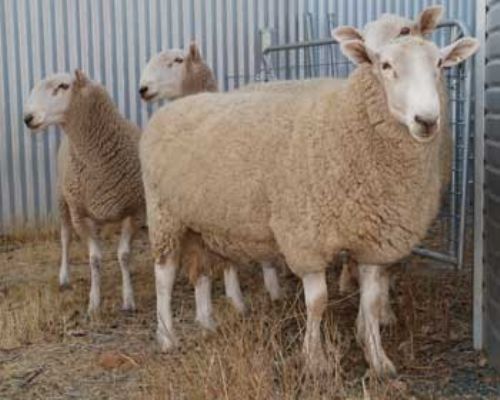 Australian Border Leicester Association
Australian Border Leicester Association
"The Breed with a proud history and a positive future"
Over many years the Border Leicester has proved itself to be the number one maternal breed in Australia. First cross Border Merino ewes are sought after by leading lamb producers across the country because of their ability to produce large numbers of quality lambs, over a wide range of climatic conditions.
While the Border Leicester's beginnings are very much British, its impact on the Australian sheep industry has been enormous.Origin and early history
Their origins can be directly traced back to the Dishley Leicester, made famous by the renowned Briskish livestock breeder Robert Bakewell (1726-1795). His fame and prestige as an innovative breeder of livestock saw many enthusiastic breeders visiting to learn of his new ways of breeding stock. Among Bakewell's visitors in 1767 were Matthew and George Cully of Northumberland who took back north with them some of the Dishley Leicesters.
This practice continued until about 1830, by this time the northern sheep were starting to evolve. The northern type had now become longer in the body, better sprung in the rib, more developed in the brisked and with a much more graceful set of the head and neck. At this time northern breeders began calling their sheep Border Leicesters, the name being taken from the border country between England and Scotland.
Early years in Australia
I.CO. Cochrane of Aitkenside, Geelong, Victoria established one of the first Australia Border Leicester studs in 1881. Then a Mr. Landale, of Wandook, Deniliquin, New South Wales imported 330 stud ewes and 10 stud rams from New Zealand in 1895. For the next 20 years many studs were established with sheep from both New Zealand and Scotland. The popularity of the Border Leicester continued to grow as breeders adapted them to fit their new environment. In the early to mid 1900s the bred began to establish its reputation as the ideal sire for the production of first cross ewes.
Border Leicester's today
The modern Border Leicester is noticeably different to both its ancestors and current British Border Leicester's. There are now almost 300 registered studs across the country. Through a mix of modern performance recording and traditional methods these studs are committed to keeping the breed a vital and important part of the Australian lamb industry.
"The Best Dam Rams Around!"
Why Border Leicesters?
The success of any flock is through the strength of its females. In the Australian prime lamb industry, the development of the Border Leicester x Merino cross ewe has proven to be the backbone of its success. This magnificent, highly productive ewe produces a majority of Australia's high quality grass fed lambs that in recent years has seen exports go to nearly 100 countries, plus a rapidly growing domestic consumption through the restaurant trade.
Australia's dominant sheep breed is the Merino, based on its wool production. Besides the huge production advantages that can be made through hybird vigour, the crossing of a Border Leicester ram over the readily available Merino ewes, produces a ewe that has far superior maternal and meat producing traits than those of the Merino.
The Border Leicester x Merino cross ewe has become renowned for producing and raising high percentages of top quality lambs that grow rapidly to heavy weights.
More lambs per head and/or unit area; more dollars per lamb in less time greatly increases any producer's profitability.
The Border Leicester x Merino crosses still produce good quantities of wool, which despite being stronger than most Merino fleece wool, still has an important market niche and demand. The clean points of this cross give a clear husbandry and management advantage. The wether portion of the first cross grow quickly in ideal conditions and produce good large lean lamb.
The first cross (both ewe and wether portion) also have a far superior skin than the Merino skin, with the elimination of wrinkies and ribbing; these being huge devaluation factors in the skin trade. This superior skin value is also extremely important when passed onto the 'second cross' lambs in the prime lamb industry; an economic advantage often overlooked by producers.
The Border Leicester ram can have a huge economic role to play in any commercial sheep producer's economic outcome.



